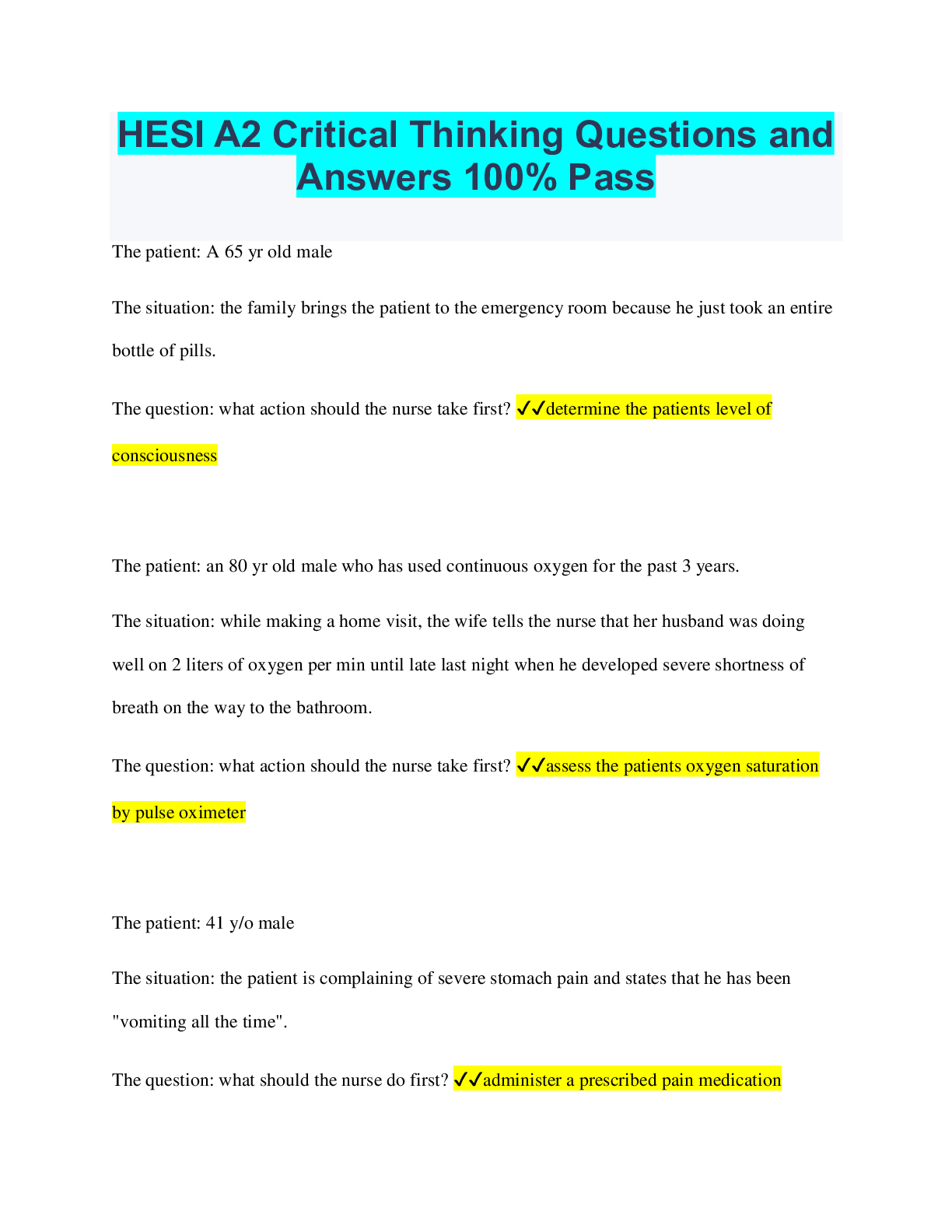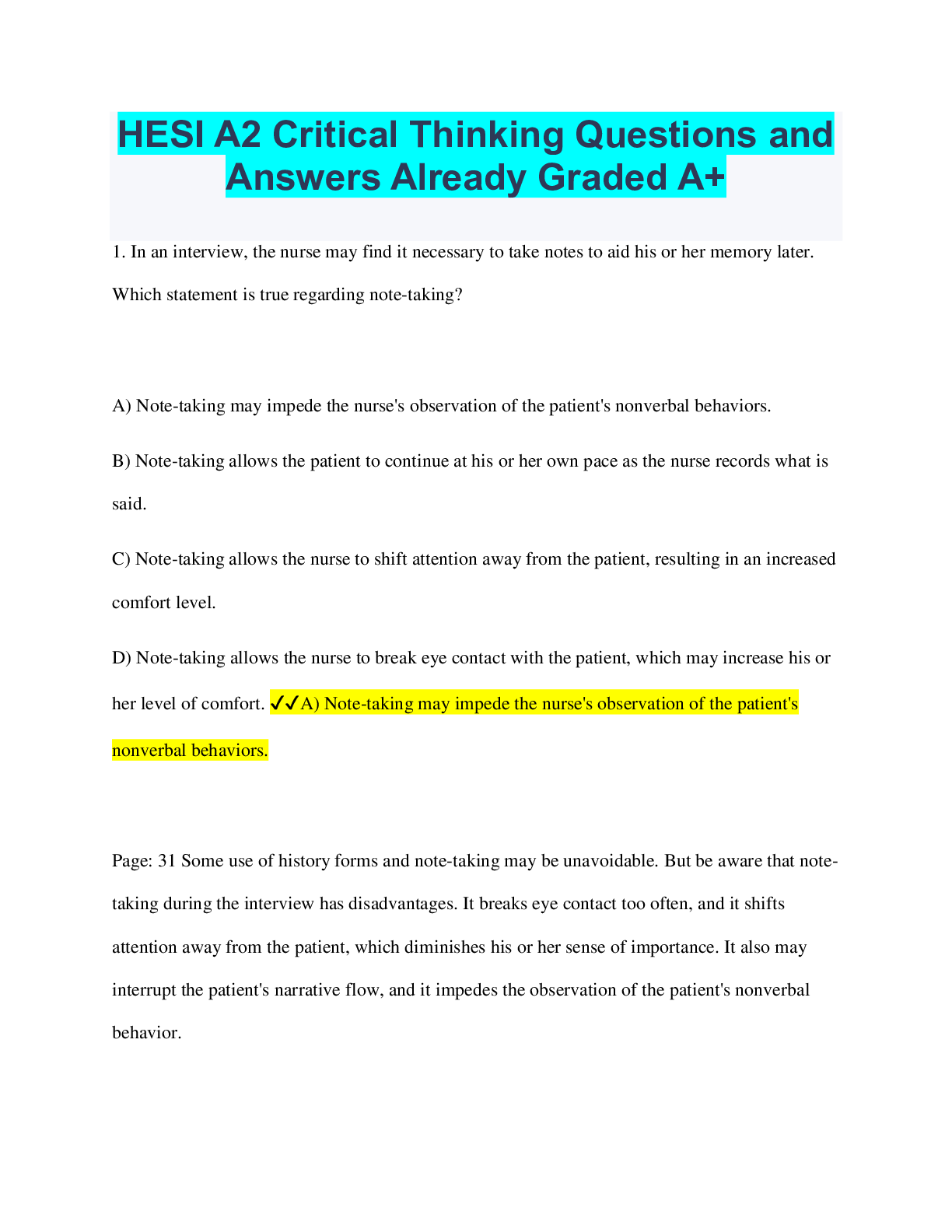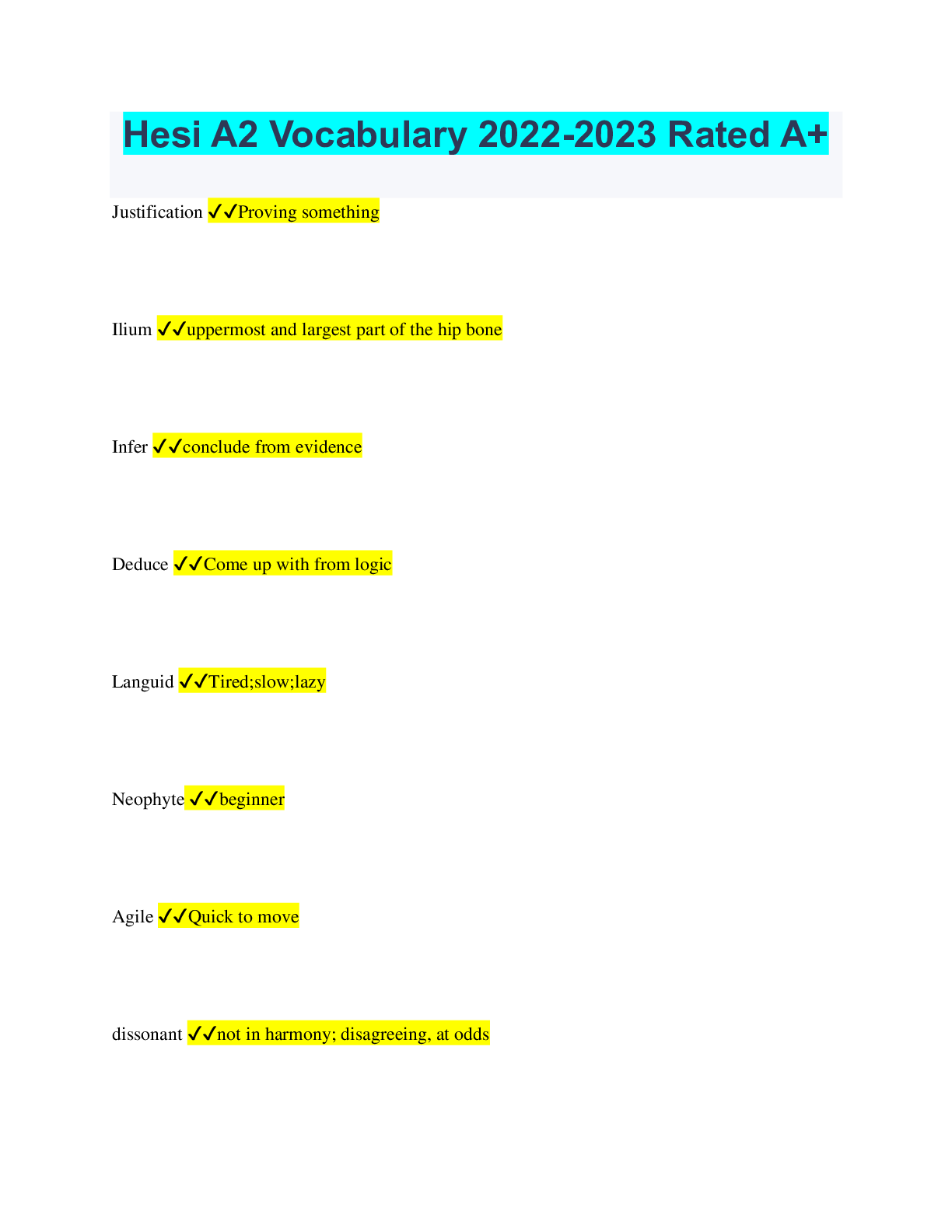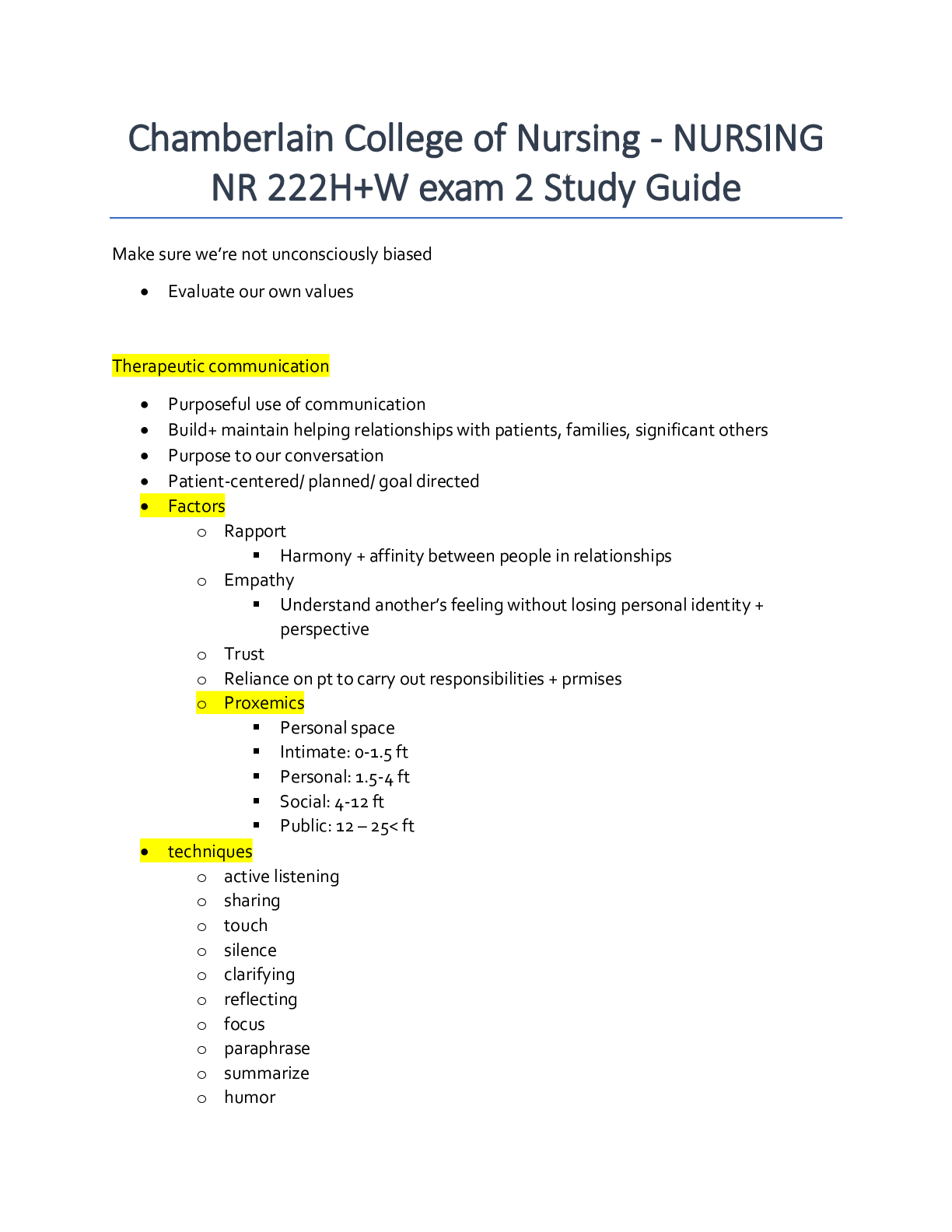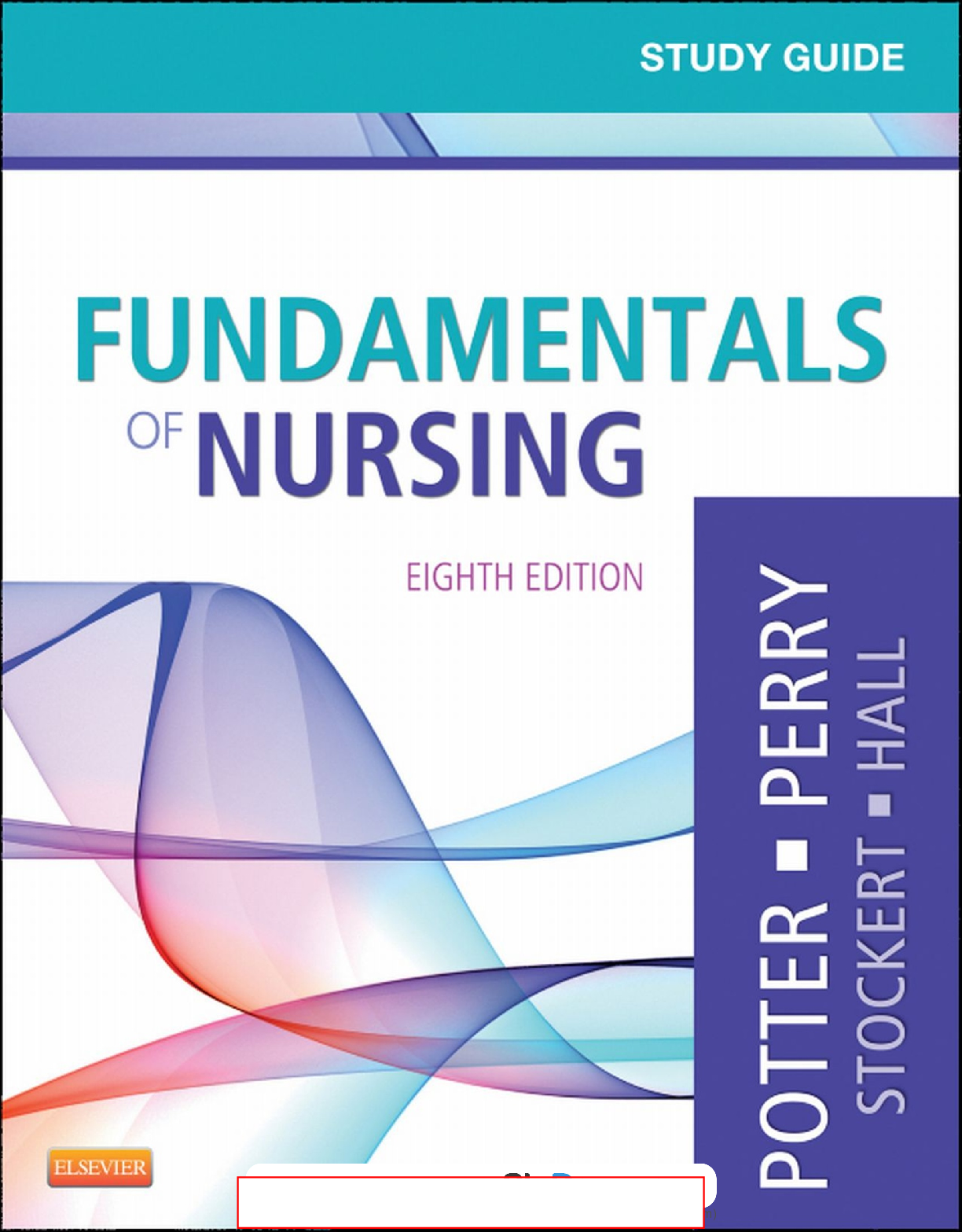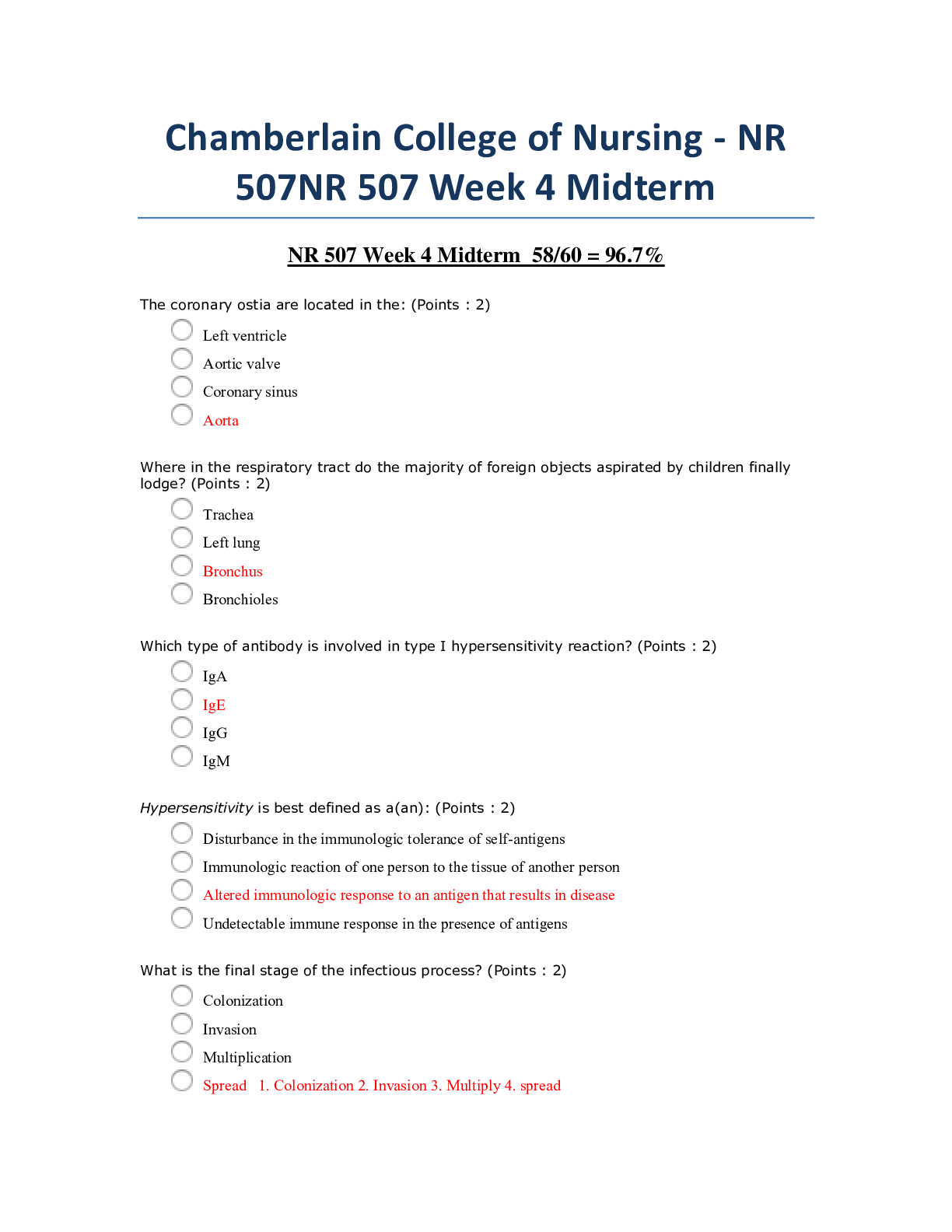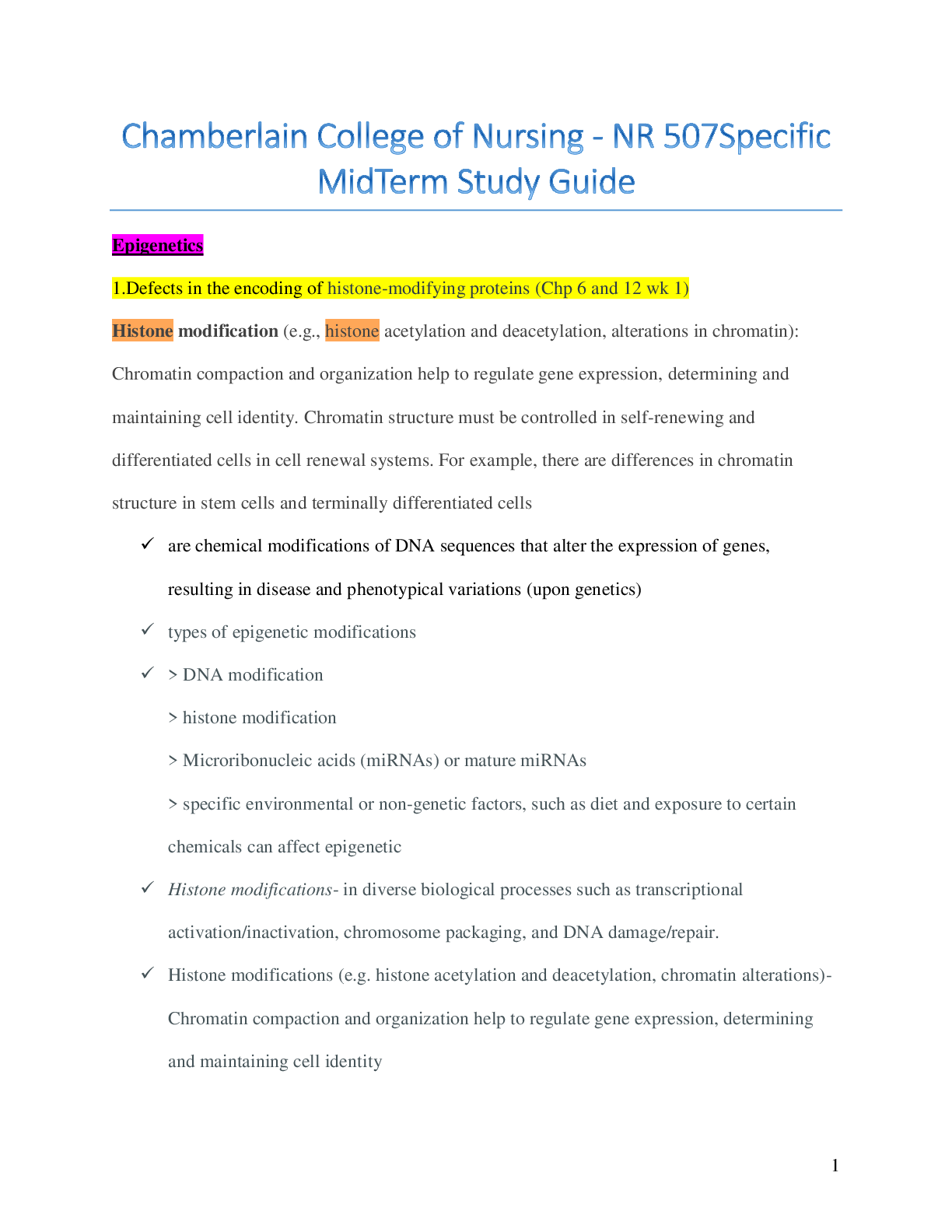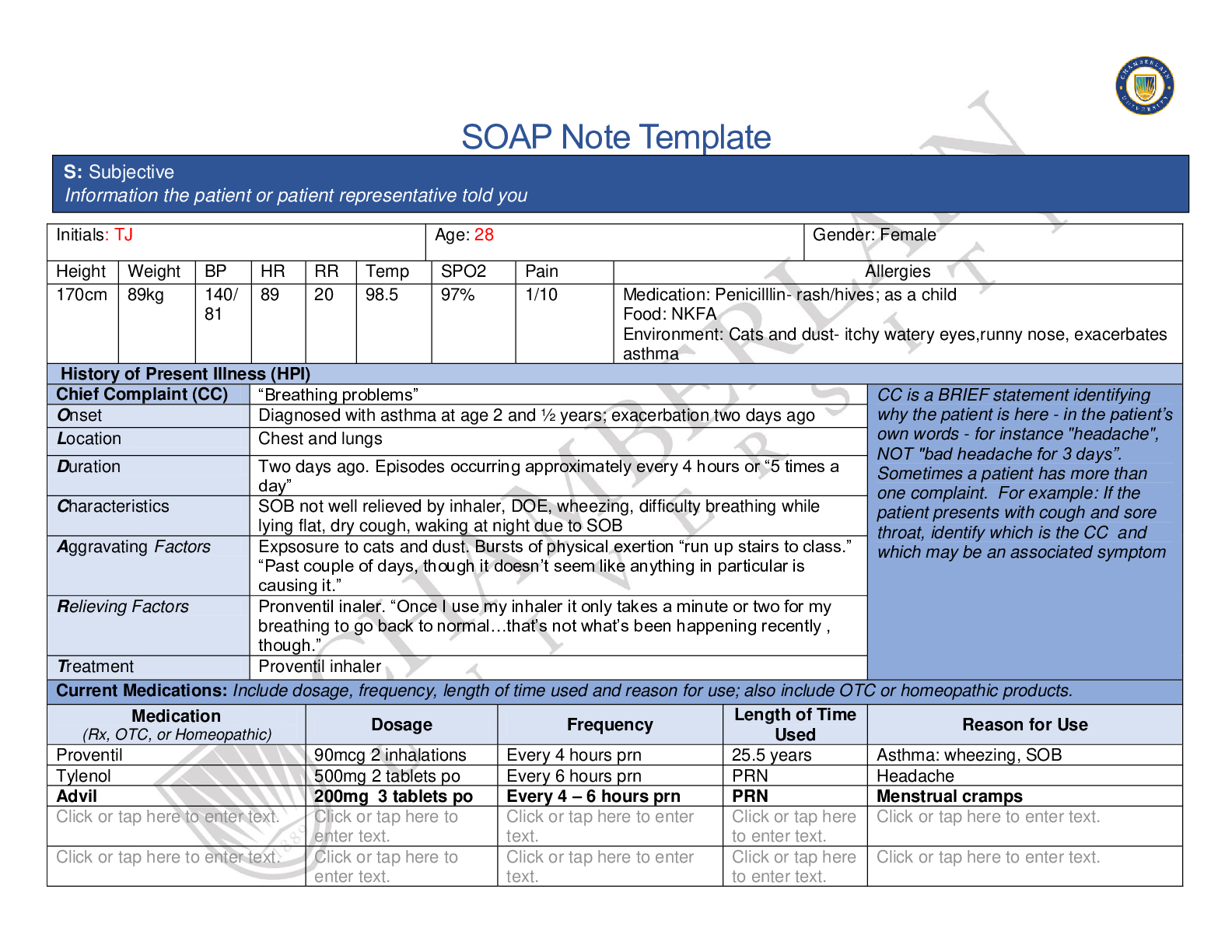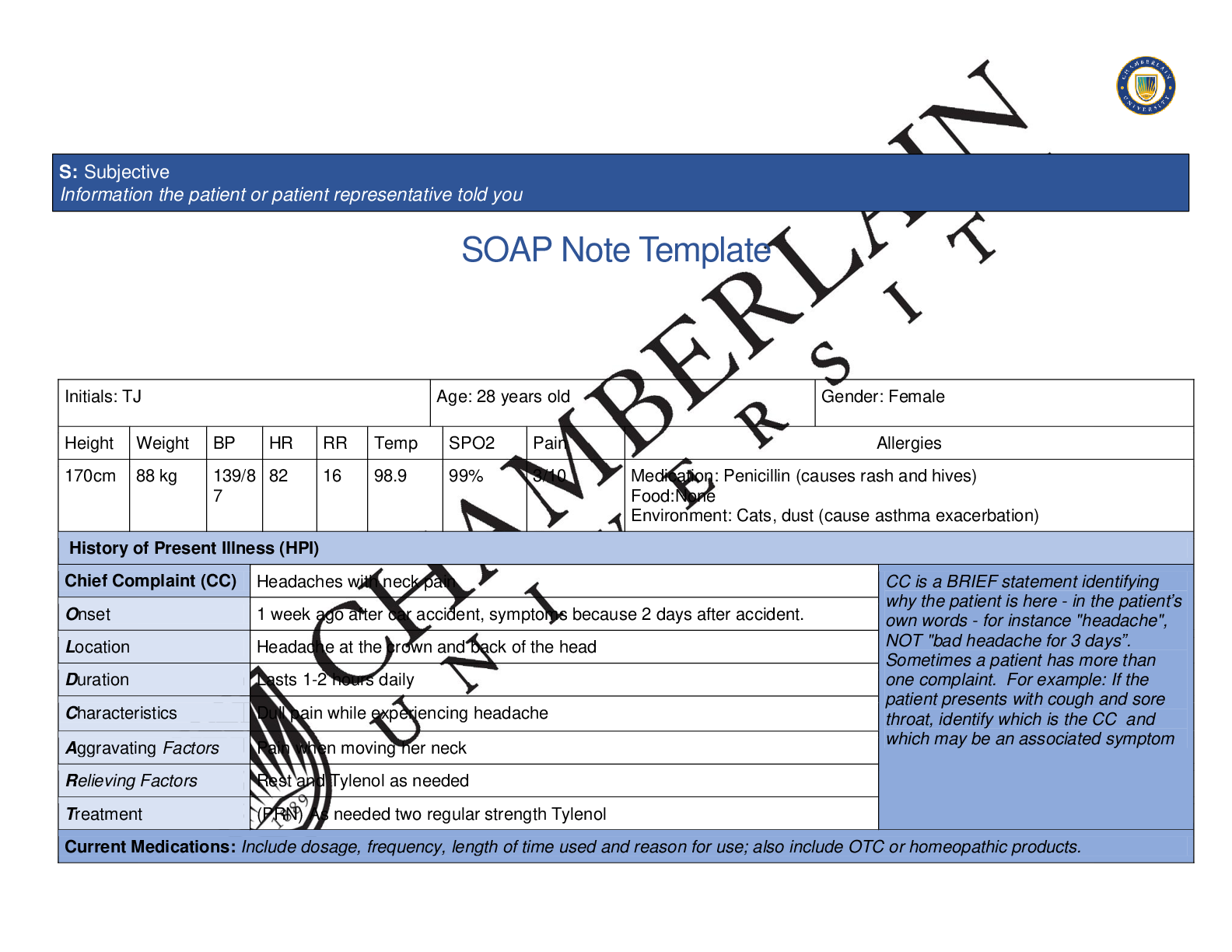*NURSING > QUESTIONS & ANSWERS > Chamberlain College of Nursing - NR 507 > Patho Midterm week 4 exam - Latest 2019; Verified Answers (All)
Chamberlain College of Nursing - NR 507 > Patho Midterm week 4 exam - Latest 2019; Verified Answers with Instructor's Explanations.
Document Content and Description Below
1. Question : Hemolytic disease of the newborn (HDN) can occur if the mother: Student Answer: Is Rh-positive and the fetus is Rh-negative Is Rh-negative and the fetus is Rh-positive Has type A ... blood and the fetus has type O Has type AB blood and the fetus has type B Instructor Explanation: HDN can occur only if antigens on fetal erythrocytes differ from antigens on maternal erythrocytes. Maternal-fetal incompatibility exists only if the mother and fetus differ in ABO blood type or if the fetus is Rh-positive and the mother is Rh-negative. This erythrocyte incompatibility does not exist in any of the other options. Points Received: 2 of 2 Comments: Question 2. Question : Examination of the throat in a child demonstrating signs and symptoms of acute epiglottitis may contribute to which lifethreatening complication? Student Answer: Retropharyngeal abscess Laryngospasms Rupturing of the tonsils Gagging induced aspiration Instructor Explanation: Examination of the throat may trigger laryngospasm and cause respiratory collapse. Death may occur in a few hours. This selection is the only option that accurately identifies the life-threatening complication that can result from -589875941 MultipleChoice 68 True 0 -589875941 MultipleChoice 68 an examination of the throat of a child who demonstrates the signs and symptoms of acute epiglottitis. Points Received: 2 of 2 Comments: Question 3. Question : If the sinoatrial (SA) node fails, then at what rate (depolarizations per minute) can the atrioventricular (AV) node depolarize? Student Answer: 60 to 70 40 to 60 30 to 40 10 to 20 Instructor Explanation: If the SA node is damaged, then the AV node will become the heart’s pacemaker at a rate of approximately 40 to 60 spontaneous depolarizations per minute. Points Received: 2 of 2 Comments: Question 4. Question : What is the ratio of coronary capillaries to cardiac muscle cells? Student Answer: 1:1 (one capillary per one muscle cell) 1:2 (one capillary per two muscle cells) 1:4 (one capillary per four muscle cells) -589875940 MultipleChoice 87 True 0 -589875940 MultipleChoice 87 -589875939 MultipleChoice 75 True 0 -589875939 MultipleChoice 75 1:10 (one capillary per ten muscle cells) Instructor Explanation: The heart has an extensive capillary network, with approximately 3300 capillaries per square millimeter (ca/mm2 ) or approximately one capillary per one muscle cell (muscle fiber) [Show More]
Last updated: 2 years ago
Preview 1 out of 33 pages
.png)
Buy this document to get the full access instantly
Instant Download Access after purchase
Buy NowInstant download
We Accept:

Reviews( 0 )
$14.00
Can't find what you want? Try our AI powered Search
Document information
Connected school, study & course
About the document
Uploaded On
Sep 30, 2021
Number of pages
33
Written in
Additional information
This document has been written for:
Uploaded
Sep 30, 2021
Downloads
0
Views
163









